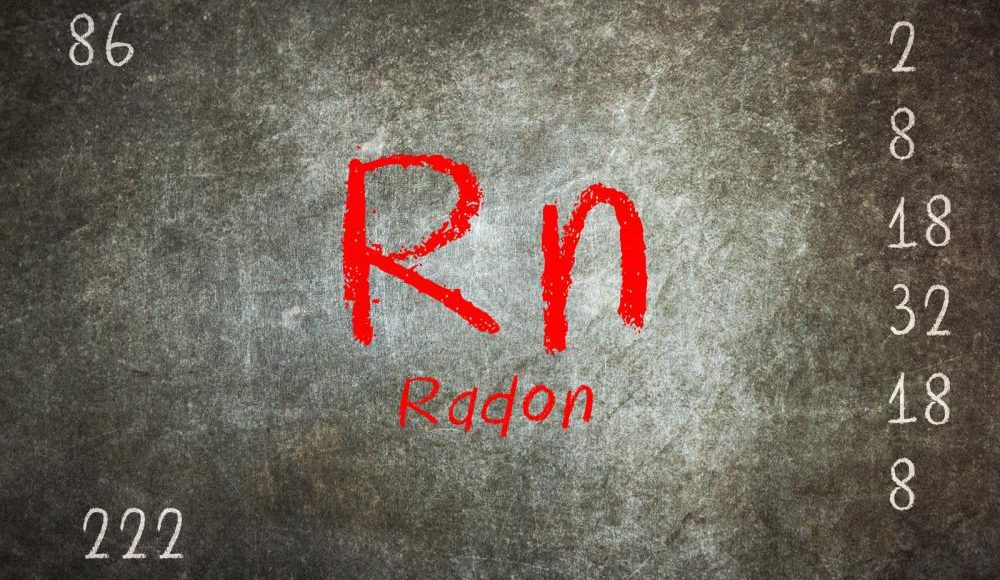Radon is the second largest cause of lung cancer in the United States. More than 20,000 people die by inhaling this gas in large quantities every year.
In Florida, radon has become a house-to-house issue – you might not even know that you are being exposed to dangerous levels of radon at your own home! One out of five houses tested in Florida has elevated levels of radon. Not only homes but schools, condominiums, and other buildings also have high radon levels. Florida is indeed on high alert for radon danger.
What is radon?
Radon is an inert gas that you cannot see, smell, or taste – this explains why you might be inhaling radon without even knowing. Where does it come from? The decay of radium in the soil has to be blamed. Radium is a decay product of uranium, which is present in almost all rocks and soil, and materials made from rocks. This is the reason why almost all buildings are exposed to the risk of radon.
How is it generated?
The radium in rocks, soil, water, and materials obtained from rocks and soil is responsible for the constant generation of radon. The radon produced in rocks and water usually stays trapped unless the rock breaks or the water mixes with the air.
Radon and its parent radium are a part of the long chain of Uranium decay. The fact that uranium is present everywhere in the earth’s crust explains the presence of radium and radon in nearly all rock and soil types.
The quantity of radon produced by the soil varies from house to house based on local geology. The level of radon in the soil ranges from a few hundred to several thousand pCi/L (pico curies per liter). The factors that affect the amount of radon that enters the house after escaping from the soil include soil moisture, soil porosity, weather, and the suction created in the house.
Average radon levels in the United States
The average radon level found in the homes in the United States is 1.3 pCi/L, whereas the average outdoor radon level is 0.4 pCi/L.
Radon danger in Florida
High radon levels have been found in all regions of the state. The radon test reports tell that one in five homes in Florida have elevated levels of radon. Locally, a high of seven out of ten and a low of one in hundred homes have reported having high radon levels.
With the rising radon danger in Florida, it is important that you test your home for a potential radon problem – it is perhaps the only way to stay in the loop.
What are the health risks associated with radon exposure?

Although there are no immediate symptoms of radon exposure, prolonged exposure to unsafe levels of radon demonstrates chronic results. The incidence of lung cancer in humans has drastically increased due to radon exposure. It is the leading cause of lung cancer for people who do not smoke.
It is estimated that about 12% of lung cancers are caused by radon exposure every year in the United States.
What actually happens is that upon inhaling the gas into your lungs, radon and its decomposed particles emit alpha particles that are full of energy. Alpha particles usually come from radon decay products. These energy-rich particles strike the sensitive lining of the lungs called bronchi. Consequently, the cells and their DNA in your lungs are damaged. This makes you vulnerable and increases the chances of developing lung cancer.
Lung cancer is probably the only health danger associated with radon exposure and that too requires a prolonged exposure of about 10-25 years. Moreover, people who smoke are at a higher risk of developing lung cancer. Therefore, if you smoke, you need to stop and also try to avoid breathing in radon.
How can radon get into your home?
Radon comes into your home and other buildings from the rocks or soil beneath them. It rises through the soil and gets trapped under the house. Along with other trapped gases, radon builds up under your house. Since the air pressure of your home is lower as compared to that of the soil, your home acts as a vacuum cleaner and forces these gases through the floors and walls into the house. Cracks and other openings also give way to these gases. Once radon gets into your home, it can become trapped and concentrated.
Moreover, all building materials, including concrete and stone have traces of radium. Recent developments in the construction world have contributed to increasing radon problems. Houses that are built solely on concrete and have less entryway for fresh air are more likely to have building material related to radon problems.
Radon may also be dissolved in water. Thus, it can enter your home through faucets, showers, and washing machines. The higher the amount of radon in the water, the more it can contribute to radon level.
Radon problems are not limited to specific geographical areas – no matter where you live, your home can have elevated levels of radon.
How can you fix a radon problem?
Fixing a radon problem is quite simple and it does not cost much either. To get the best solution, you should know what kind of a radon problem you have at hand and how big or small it is.
Hence, the first step is to identify the radon levels in your home by testing it. If your home is built radon-resistant, built with a mitigation system, or has never been tested before, testing remains the first step. Whatever the case, if radon level in your home is greater than 4 pCi/L, you need to install a mitigation system by hiring a certified mitigation professional. Even if the radon level is less than 4 pCi/L, we recommend you to test every two years – after all, it is about your health.
If the problem is not that big meaning the radon levels are low, you may be able to solve the problem by ventilating and sealing the cracks on the floor.
On the other hand, if the radon problem is serious you will need to use active mitigation systems. A standard mitigation system involves soil depressurization and costs about $1200 to $2000. However, other systems can cost more than this.
Conclusion
It has been proven that radon increases the risk of lung cancer. While the radon danger is continuously rising in Florida, you need to make sure that you are not being exposed to high radon levels in your home. Remember the higher the radon and the longer the exposure, the greater the risk. Therefore, test your home regularly to make sure the radon level is in control. In case it elevates, immediately get help from a certified mitigation expert.



… [Trackback]
[…] Read More on to that Topic: beycome.com/blog/radon-danger-in-florida-and-how-to-fix-it/ […]
… [Trackback]
[…] Info on that Topic: beycome.com/blog/radon-danger-in-florida-and-how-to-fix-it/ […]
… [Trackback]
[…] Find More here on that Topic: beycome.com/blog/radon-danger-in-florida-and-how-to-fix-it/ […]
… [Trackback]
[…] Find More on that Topic: beycome.com/blog/radon-danger-in-florida-and-how-to-fix-it/ […]
… [Trackback]
[…] Read More on on that Topic: beycome.com/blog/radon-danger-in-florida-and-how-to-fix-it/ […]
… [Trackback]
[…] Info on that Topic: beycome.com/blog/radon-danger-in-florida-and-how-to-fix-it/ […]
… [Trackback]
[…] Read More on that Topic: beycome.com/blog/radon-danger-in-florida-and-how-to-fix-it/ […]
… [Trackback]
[…] Information on that Topic: beycome.com/blog/radon-danger-in-florida-and-how-to-fix-it/ […]
… [Trackback]
[…] Read More on that Topic: beycome.com/blog/radon-danger-in-florida-and-how-to-fix-it/ […]
… [Trackback]
[…] Information to that Topic: beycome.com/blog/radon-danger-in-florida-and-how-to-fix-it/ […]
… [Trackback]
[…] Info on that Topic: beycome.com/blog/radon-danger-in-florida-and-how-to-fix-it/ […]
… [Trackback]
[…] Information to that Topic: beycome.com/blog/radon-danger-in-florida-and-how-to-fix-it/ […]
… [Trackback]
[…] There you can find 20781 more Information on that Topic: beycome.com/blog/radon-danger-in-florida-and-how-to-fix-it/ […]
… [Trackback]
[…] Find More to that Topic: beycome.com/blog/radon-danger-in-florida-and-how-to-fix-it/ […]
… [Trackback]
[…] Find More on that Topic: beycome.com/blog/radon-danger-in-florida-and-how-to-fix-it/ […]
… [Trackback]
[…] Find More Information here to that Topic: beycome.com/blog/radon-danger-in-florida-and-how-to-fix-it/ […]
… [Trackback]
[…] Information on that Topic: beycome.com/blog/radon-danger-in-florida-and-how-to-fix-it/ […]
… [Trackback]
[…] Read More to that Topic: beycome.com/blog/radon-danger-in-florida-and-how-to-fix-it/ […]
… [Trackback]
[…] Here you can find 97284 more Info on that Topic: beycome.com/blog/radon-danger-in-florida-and-how-to-fix-it/ […]
… [Trackback]
[…] Read More on that Topic: beycome.com/blog/radon-danger-in-florida-and-how-to-fix-it/ […]
… [Trackback]
[…] Find More Information here on that Topic: beycome.com/blog/radon-danger-in-florida-and-how-to-fix-it/ […]
… [Trackback]
[…] Find More on to that Topic: beycome.com/blog/radon-danger-in-florida-and-how-to-fix-it/ […]
… [Trackback]
[…] Find More on on that Topic: beycome.com/blog/radon-danger-in-florida-and-how-to-fix-it/ […]
… [Trackback]
[…] Read More on that Topic: beycome.com/blog/radon-danger-in-florida-and-how-to-fix-it/ […]
… [Trackback]
[…] There you can find 99813 more Info on that Topic: beycome.com/blog/radon-danger-in-florida-and-how-to-fix-it/ […]
… [Trackback]
[…] Read More here on that Topic: beycome.com/blog/radon-danger-in-florida-and-how-to-fix-it/ […]
… [Trackback]
[…] Find More Info here on that Topic: beycome.com/blog/radon-danger-in-florida-and-how-to-fix-it/ […]
… [Trackback]
[…] Info to that Topic: beycome.com/blog/radon-danger-in-florida-and-how-to-fix-it/ […]
… [Trackback]
[…] Read More on that Topic: beycome.com/blog/radon-danger-in-florida-and-how-to-fix-it/ […]
… [Trackback]
[…] Information on that Topic: beycome.com/blog/radon-danger-in-florida-and-how-to-fix-it/ […]
… [Trackback]
[…] Find More to that Topic: beycome.com/blog/radon-danger-in-florida-and-how-to-fix-it/ […]
… [Trackback]
[…] Read More Info here on that Topic: beycome.com/blog/radon-danger-in-florida-and-how-to-fix-it/ […]
… [Trackback]
[…] Find More Information here on that Topic: beycome.com/blog/radon-danger-in-florida-and-how-to-fix-it/ […]
… [Trackback]
[…] Read More to that Topic: beycome.com/blog/radon-danger-in-florida-and-how-to-fix-it/ […]
… [Trackback]
[…] Read More Info here to that Topic: beycome.com/blog/radon-danger-in-florida-and-how-to-fix-it/ […]
… [Trackback]
[…] Read More Information here to that Topic: beycome.com/blog/radon-danger-in-florida-and-how-to-fix-it/ […]
… [Trackback]
[…] Find More Information here to that Topic: beycome.com/blog/radon-danger-in-florida-and-how-to-fix-it/ […]
… [Trackback]
[…] Read More Information here on that Topic: beycome.com/blog/radon-danger-in-florida-and-how-to-fix-it/ […]
… [Trackback]
[…] Information to that Topic: beycome.com/blog/radon-danger-in-florida-and-how-to-fix-it/ […]
… [Trackback]
[…] Information on that Topic: beycome.com/blog/radon-danger-in-florida-and-how-to-fix-it/ […]